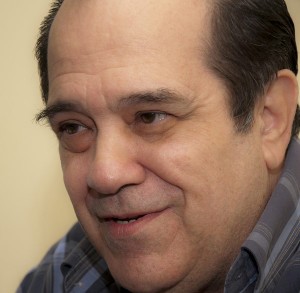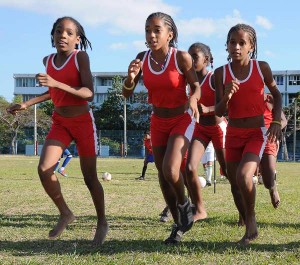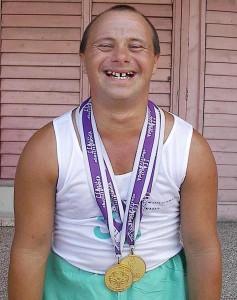The Secrets of Cuba’s Athletes

HAVANA TIMES — “If you look at the number of medals compared to the size of the population, Cuba is the country in first or second place in the world,” says Arnaldo Rivero, the national teaching director of the Cuban Institute of Sports and Recreation (INDER).
The accomplishments of the island are enormous. Since 1959 it has sustained growth, with its climax at the Barcelona Olympics in 1992, where it showed himself a true power house taking fifth place worldwide.
Nevertheless, after the demise of the Soviet Union (its main trading partner), there began a harsh economic crisis that affected all sectors of society. This ended up dragging Cuba back to 28th position in Olympic medals in Beijing (2008).
The officials at INDER explained the strategies that allowed Cuba to reach such high levels, as well as the reasons for its decline and the policies they’re planning in order to maintain the nation’s athletic capacity.
Educational explosion
Arnaldo Rivero, who is also the UNESCO president of sports, told us that at the triumph of the revolution there were only 800 non-graduate physical education teachers and only 14,500 students around the country who received training through their classes.
“From that situation we transitioned to what was truly a general educational explosion, giving physical education in all schools. Today we have 84,000 graduates in physical education. There was tremendous effervescence when it came to sports and mass participation, that’s one of our secrets,” said Rivero.
“Young people have theoretical class sessions in school and other ones devoted to the practice of sports.” The “Juegos Escolares” (School Games) was born in 1961, which Rivero defined as “the principal competition of Cuban sports” because that’s where the budding talent is identified.

He holds that sports in schools is key: “the greatest chance of developing a child is when they’re between six and ten years of age. What is not achieved at that time in the training of qualities and skills such as speed, flexibility, agility and rhythm, is almost impossible to achieve later on.”
Later they created special schools in all of the provinces where students receive thorough academic and athletic training. If the School Games served as the pool, these special schools are what would polish each prospect extracted from them.
Diversification
The other great secret of Cuban sports, according to Rivero, was diversification. “We’ve won gold, Olympic and world medals with athletes as young as teenagers, and in 25 sports.”
While “Germany pins all of its budget and energy on eight individual sports, because that wins them more medals, we’re diversifying and we’re starting to see the results where we had no precedents, like in water polo, ball sports and combat sports.”
That massive expansion and diversification opened the doors to the poorest sectors of the population, where there were many Afro-Cubans, and “today the majority of our athletes are black, even in sports where participation is predominantly white, such as gymnastics, fencing and swimming.”
Rivero added that all Cuban athletes study. “We’re also concerned that they have a profession, many opt for a Bachelor of Physical Education, but others become doctors and engineers. The average educational level of our delegation to London is the sophomore level in college.”
The crisis of sports
The 1990s came and with that period the worst economic crisis in revolutionary Cuba. Our sports schools saw their housing capacity cut back, training was reduced due to lack of adequate food and equipment for the sports industry dwindled to almost nothing.

One means of securing resources is now the sale of services. “Over the past two years we’ve placed more than 15,000 technicians in 106 countries worldwide,” said Rivero, but demand has declined significantly with the global economic crisis.
The deputy minister of Sports and an Olympic medalist, Alberto Juantorena, says that in any case the resources are insufficient. “The pole itself costs $890 but the vaulting landing pit costs $52,000, or a high jump landing pit goes for $25,000, we just don’t have that kind of funding.”
Juantorena, who is also an economist, says they are not thinking about raising these funds by selling Cuban athletes to compete in the leagues of other countries.” Our strategy is to save resources, study where to place them and then make the most of them.”
As for the popular sports, deputy minister proposes “joining in with people, because we aren’t going to have sophisticated facilities in the short term. In one of the neighborhoods where we started working together with residents, we’ve turned a dump into a sports area.”
—–
(*) Visit Fernando Ravsberg’s web site.






If any of the major competitive countries dedicated the same percentage of government time, space and money to developing “professional” athletes as Cuba, these countries would likely reap the same results and more. Cuban athletes are paid to train! For all intents and purposes there is no such thing as amateur athletics in Cuba. The former East Germans obviously were the worst offenders in their financial support of their international athletes but Cuba is not far behind. I would like to see the statistics and medal count if Cuban athletes had to work a regular job like US athletes and still find the time, energy and resources to train in their sport.This article is the same self-promoting hype that Cuban apologists and syncophants love to read. You forgot to mention the low infant mortality rate and the high literacy rate. Those are always worth mentioning as well.